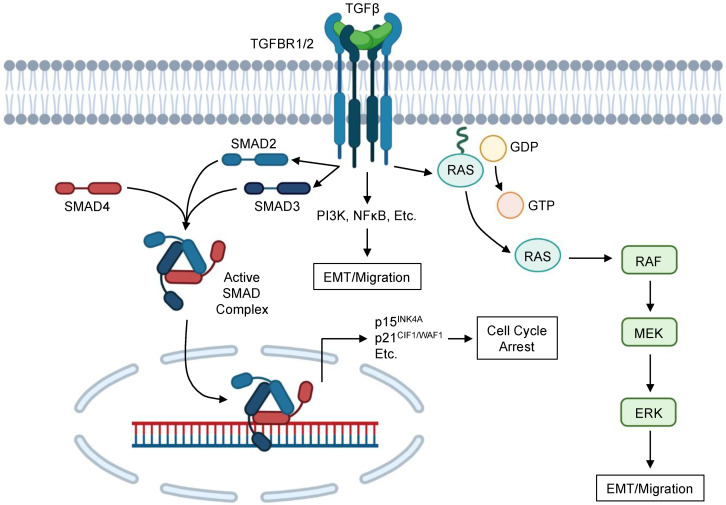Figure 1.
Simplified schema of TGFβ signaling in PDAC cells. TGFβ family ligands associate with the N-terminal extra-cellular ligand-binding ectodomain of the type 2 TGFβ receptor (TGFBR2), which then recruits the type 1 TGFβ receptor (TGFBR1). TGFBR1 phosphorylates SMAD2 and SMAD3 proteins via its serine/threonine kinase domains, leading to the formation of a heteroligomer with SMAD4. This activated SMAD complex then translocates to the nucleus, and SMAD4 associates with CAGAC motifs (or SMAD-binding elements) via its MH1 domain to alter gene expression. In benign and neoplastic pancreatic epithelial cells, the TGFβ/SMAD pathway can arrest the cell cycle via transcriptional upregulation of cyclin-dependent kinase (CDK) inhibitors including p15INK4A, p21CIF1/WAF1, and others. This blocks the transition from G1 to S phase by repressing cyclin–CDK complexes, as well as direct several additional cellular processes as described in this review. TGFβ signaling also involves several non-SMAD components, most notably the RAS/RAF/MEK/ERK pathway, which occurs through the direct phosphorylation of ShcA. TGFβ signaling also involves crosstalk with several additional pathways, including PI3K, NFκB, and many others. Although the biologic effects of these signaling events are varied, most non-SMAD TGFβ signaling appears to facilitate epithelial-to-mesenchymal transition (EMT) and cell migration.

